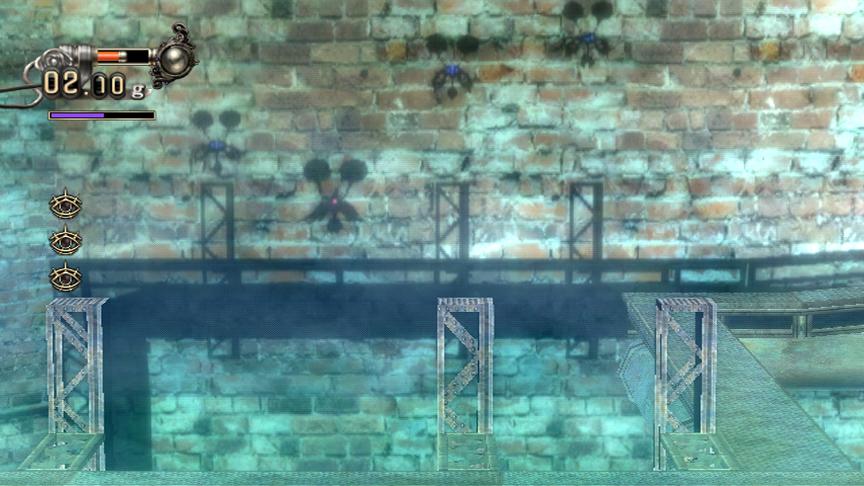Why you can trust GamesRadar+
We don’t want to spoil exactly how it works, but there’s a late point in the game when a new mechanic shows up to turn your brain upside down. Although there are foreground and background objects throughout the game, for the most part you’ll learn to ignore them as so much visual noise because the important stuff is happening on the 2D plane where shadows intersect. It’s incredibly clever how the devs wait for a number of hours into the game before giving you an ability that suddenly forces you to pay attention to the solid, 3D elements of the world in a way you hadn’t before. It almost feels as if your eyes have to retrain themselves and it makes your brain hurt – but in a very good way.

Above: Although the shadows can seem easy to lose in the background in screenshots, it's actually easy to keep track of everything in motion
Unfortunately, Lost in Shadow hurts in ways that aren’t so good as well. As we mentioned before, the nature of the levels requires a good deal of backtracking, but until very late in the game it’s not a big deal. However, there’s a point where the game asks you to backtrack really, really far, and while revisiting old levels with new abilities proves interesting in a number of ways, for the most part it annoyed us and felt like unnecessary padding of the game’s length (which clocked in at a meaty 14 hours for us). The matter is exacerbated by multiple pathways within the old levels that aren’t easy to remember the route through, so considerable wandering around blindly will probably occur for most players during this segment.
The other part of the backtracking that can annoy is that since you must gather three eyes in every level before progressing, it’s easy to miss an eye early in a stage and then have to clamber all over the place, traipsing back through long sections to figure out what you missed. We didn’t have a problem with this in most levels, but it did crop up from time to time. Regardless of how much it affects a particular player, backtracking is a big part of the game due to the manipulation of the shapes of levels through shifting shadows – but again, most of the time the backtracking is in short stretches.

Above: The boy, who never says a word, is strangely endearing simply through his silhouette and body language
A final annoyance comes from the controls, which certainly aren’t horrible, but do cause some irritation here and there when you often have to make perfect leaps by hitting A at the last possible second before falling off a ledge. There are also some issues with sluggish climbing that get on the nerves when saw blades are and buzzing up and down ladders and you have to make quick leaps. Essentially the controls could have been more responsive for a more fluid experience, but they don’t affect the fun too much and often work quite well.
A big part of Lost in Shadow’s appeal comes not from the shadow gimmick but from the game’s tone and feel. The story is simple but affecting, and the world is fantastic in the way it slowly reveals more of what the tower is like. Sure, it probably couldn’t look the way it does without ICO to inspire it, but the lonely look and sound, with softly luminescent crumbling bricks and mellow ambient music, do the job of giving you the feeling of a lost character – lost not only in a big, scary world full of monsters, but lost from his very body.

Above: Objects that you can manipulate are detectable by the little winks of light on them - they might seem obvious, but it's easy to miss some of them when they're way in the foreground
Lost in Shadow comes together to form a unique package and is often inspired in its complex play of light and shadow. It’s a fun game that sometimes frustrates, but also really works your brain’s capacity for spatial awareness. It has moments of brilliance and excitement, but most of the time simmers at “fun” and doesn’t boil over into “superb.” If the premise has had you intrigued since it was introduced, we doubt you’ll be disappointed in the result.
Jan 4, 2011
More info
| Genre | Adventure |
| Description | Play as a boy's shadow, as he attempts to climb around and up a mystical tower in this artsy-looking platform-adventure. Along the way, you must solve mysteries, puzzles and fight off enemies that try to impede the boy's progress. Lost in Shadow comes together to form a unique package and is often inspired in its complex play of light and shadow. It's a fun game that sometimes frustrates, but also really works your brain's capacity for spatial awareness. |
| Platform | "Wii" |
| US censor rating | "Everyone 10+" |
| UK censor rating | "" |
| Alternative names | "Tower of Shadow" |
| Release date | 1 January 1970 (US), 1 January 1970 (UK) |

Monster Hunter Wilds director reveals upcoming "balance changes" for the action RPG, including weapon improvements and nerfs for the "unintentionally overpowered"

Gladiator's Paul Mescal and Saltburn's Barry Keoghan finally confirmed for the long-rumored Beatles cast in a first look announcing the wildest release strategy

Donkey Kong player Billy Mitchell to receive over $218k in damages from YouTube creator Karl Jobst following defamation case











